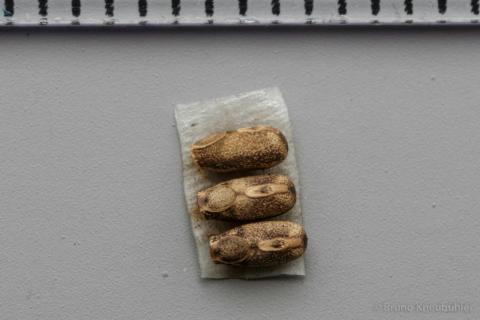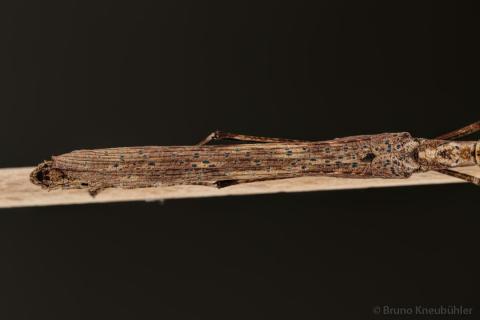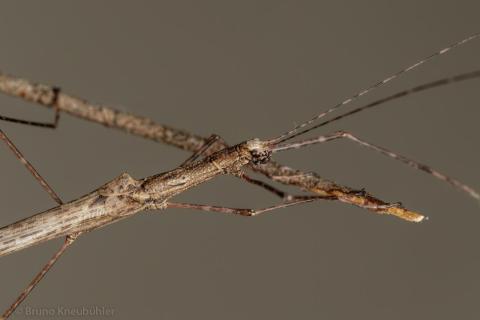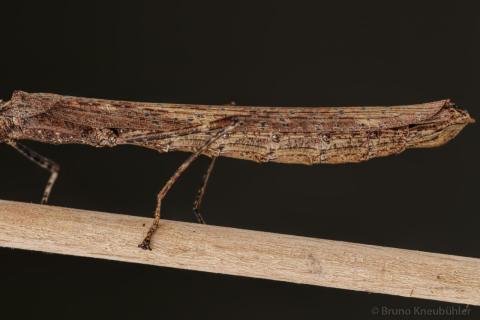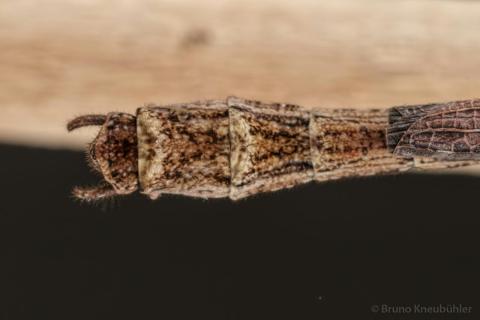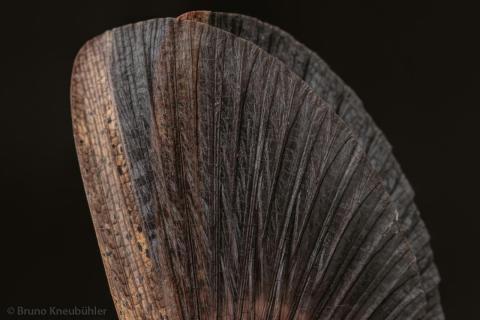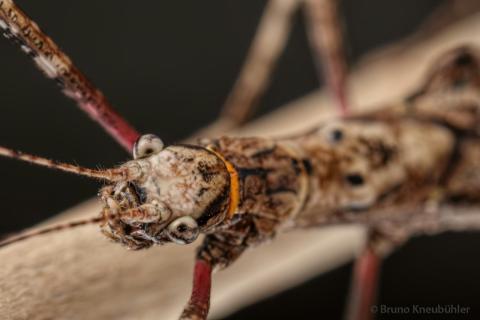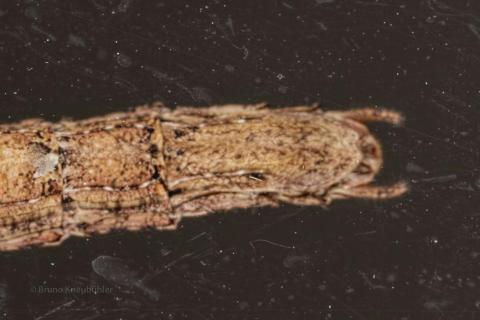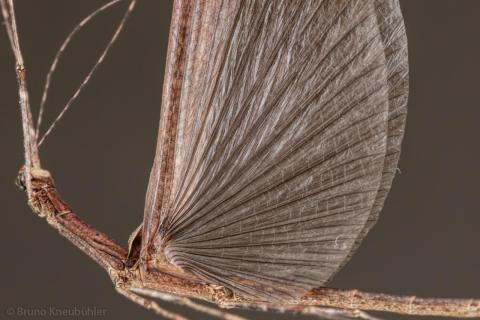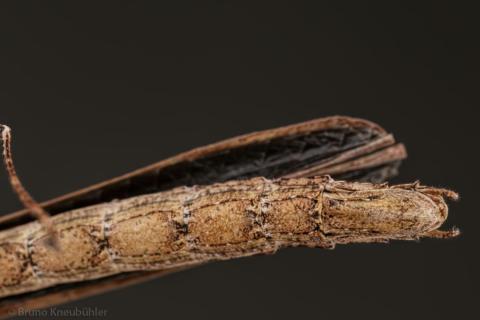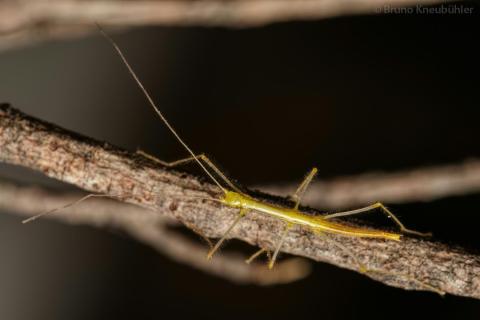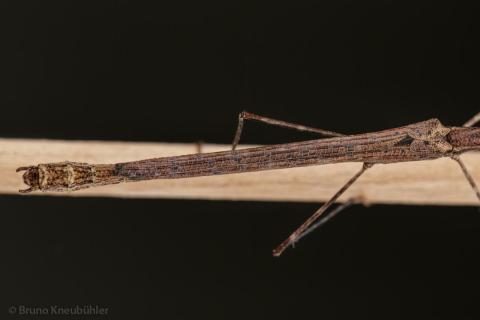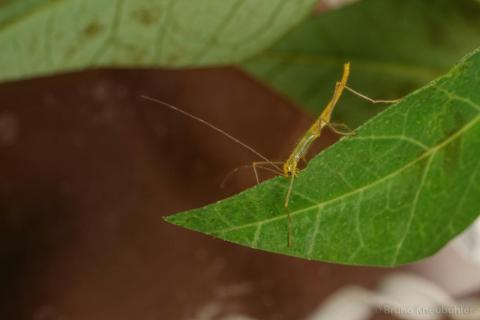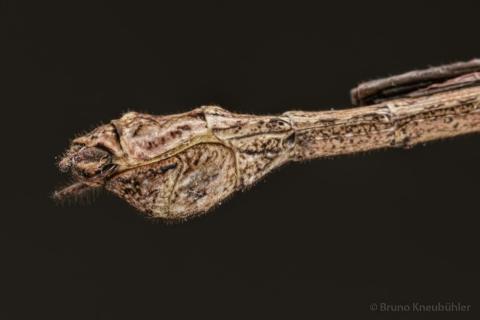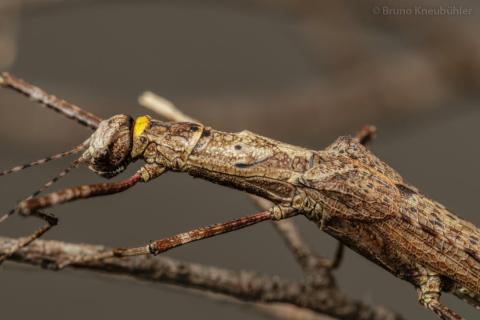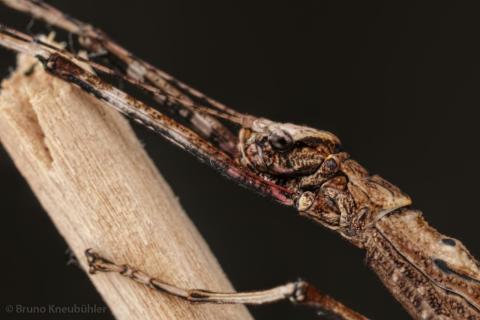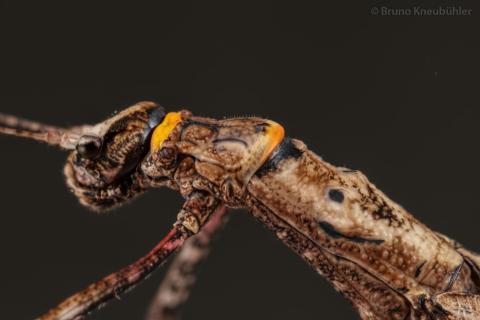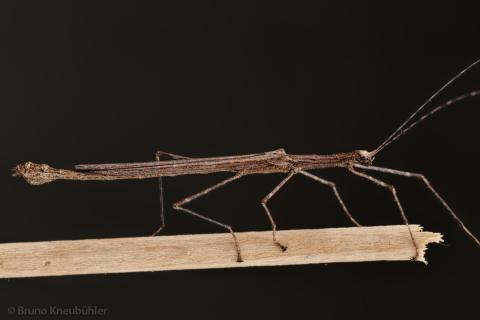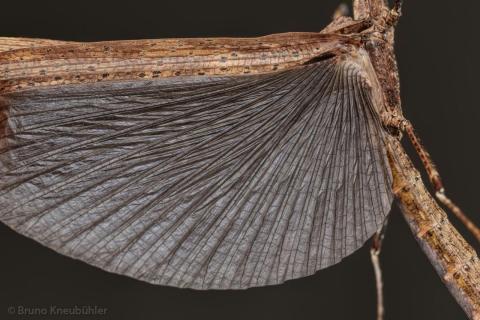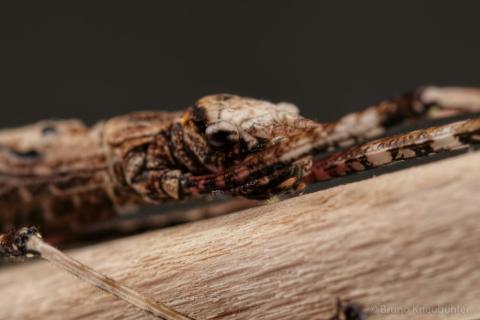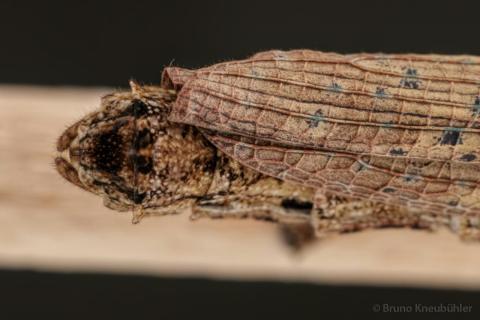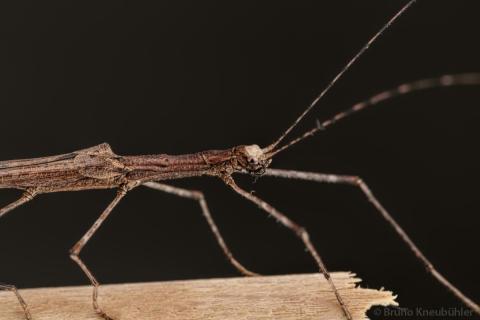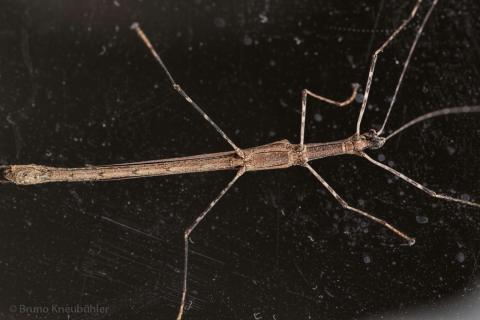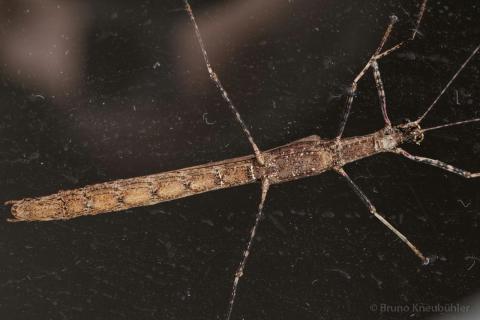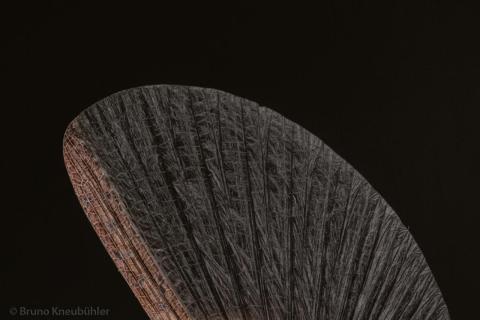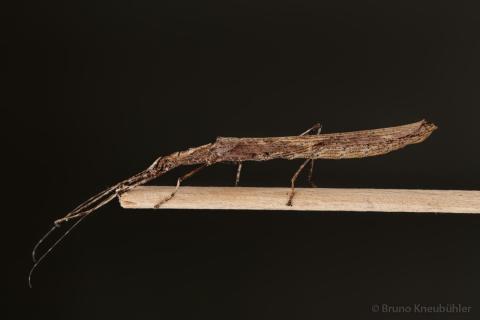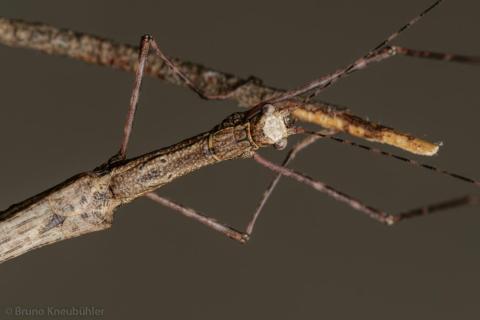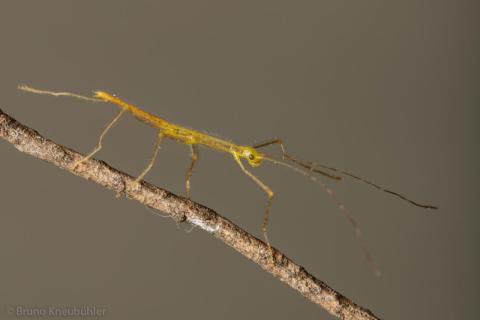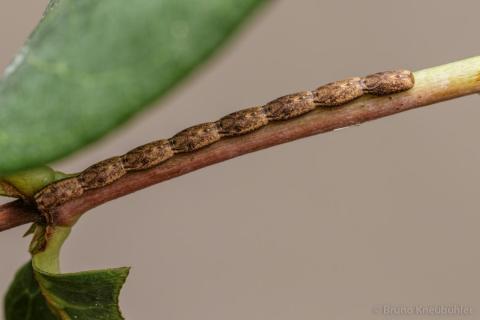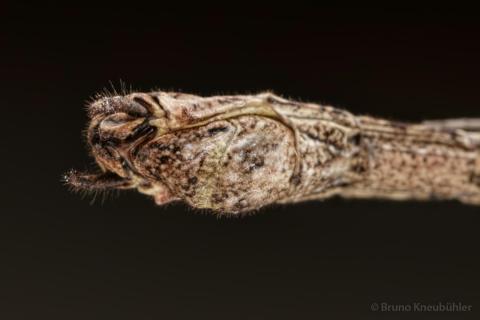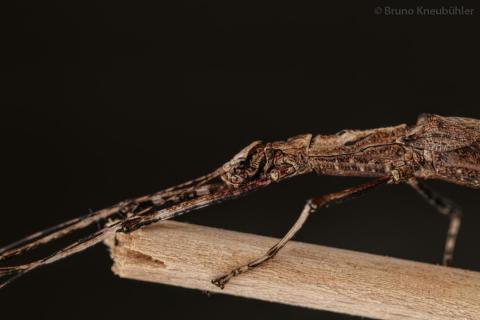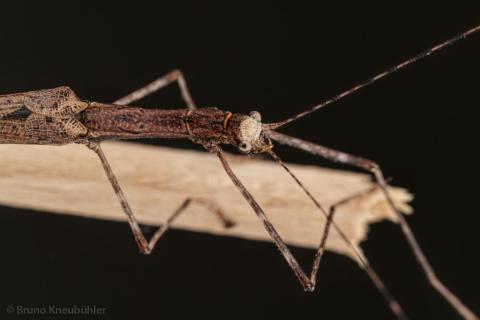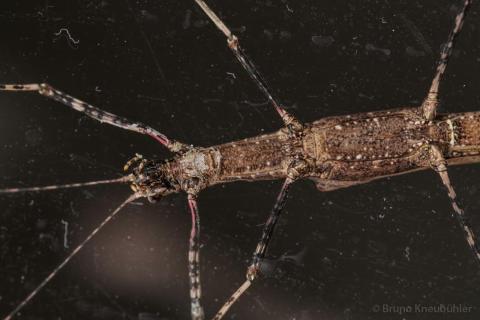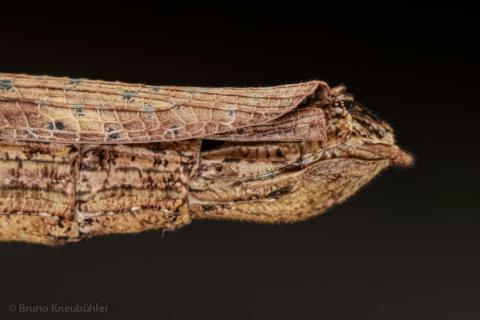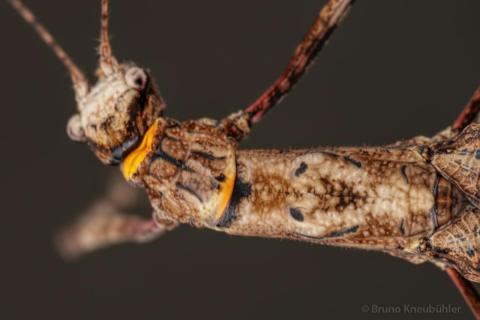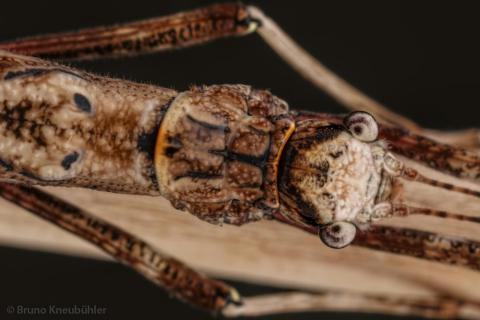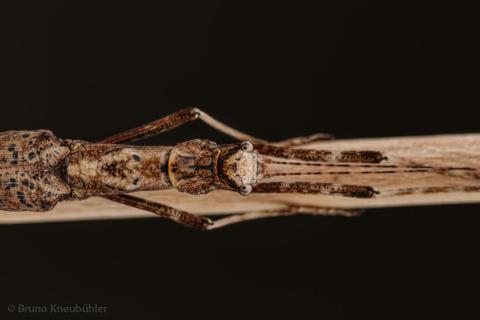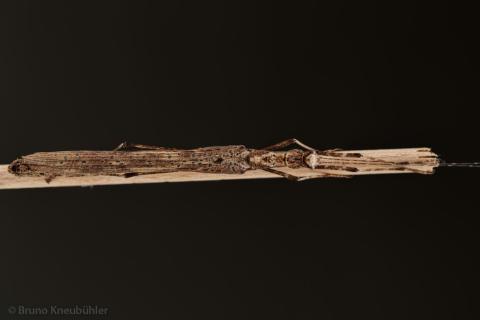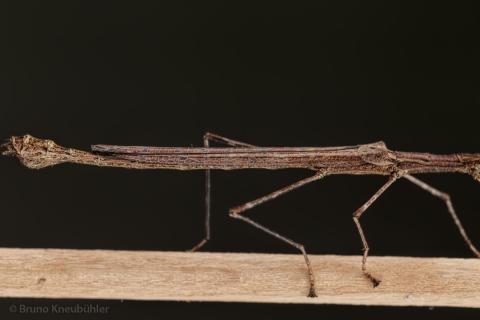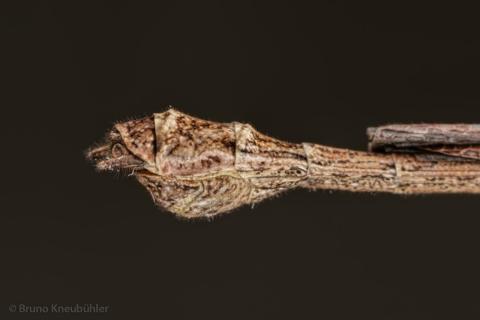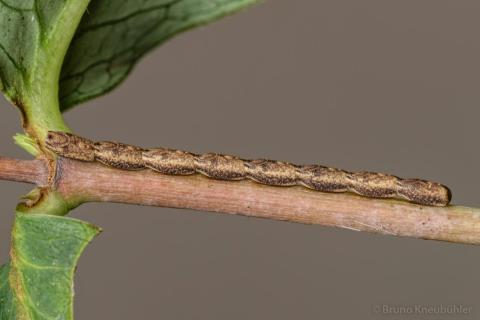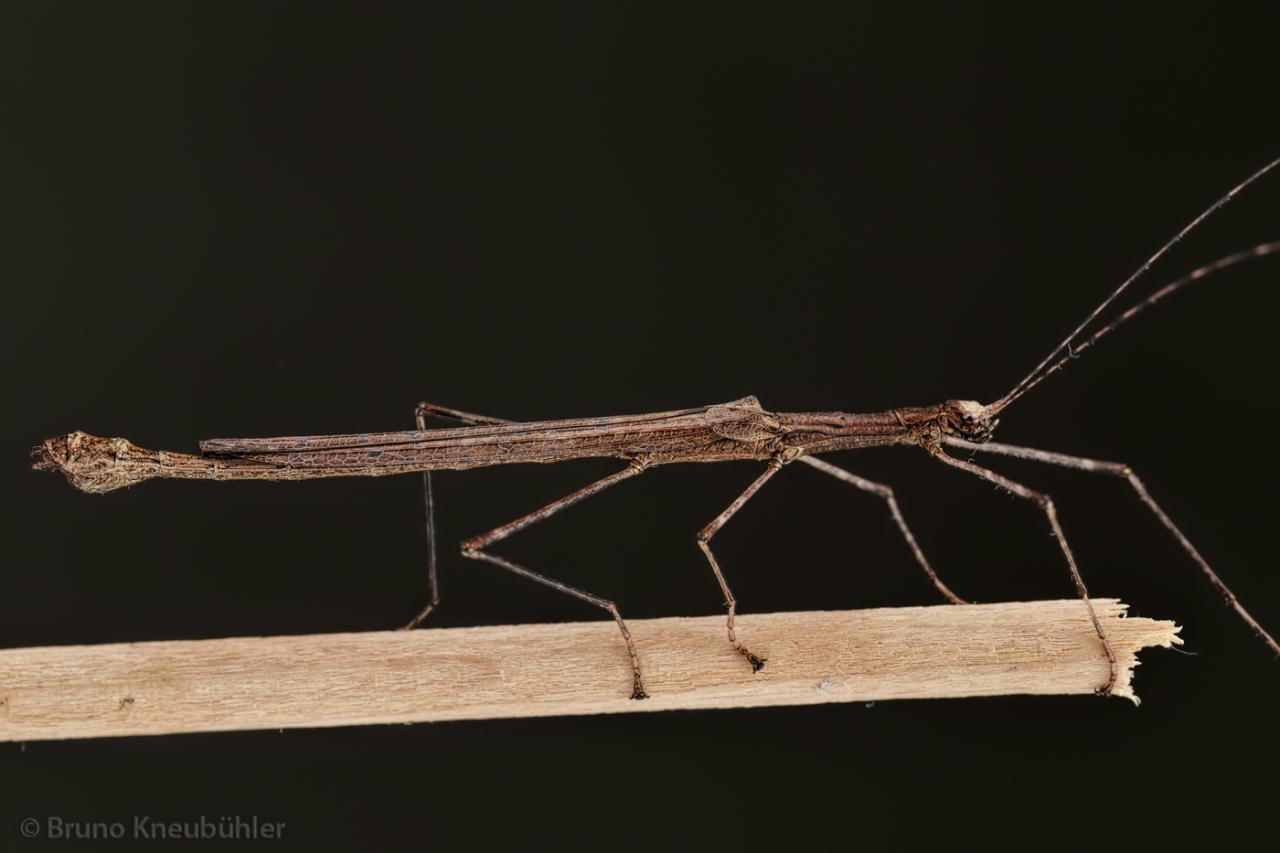
Genus
Species
Stock
CLP
790
Culture status
Unknown
Foodplants
Hypericum spp.
Breeding notes
Calvisia conicipennis "Mulu" CLP 790
(by Bruno Kneubuehler)
General Informations
- provenience: Mulu NP (Sarawak, Borneo)
- ID by Francis Seow-Choen (SG)
- F1 CB culture in 2015 by Bruno Kneubuehler (CH)
- further taxonomical informations ➤ Phasmida Species Files
- this is a pure culture, and serious breeders are asked to avoid mixing this culture with similar populations from a different provenience. When spreading this culture to other breeders, then always use the full name with provenience
- this culture has the number CLP 790 (Online Phasma Culture List)
Females
- medium-sized, bark-colored phasmids
- body length 7 cm
- contrasty brown coloration
- dark green dots on the wings
- well developed wings
Males
- slender, small phasmids
- body length 6 cm
- contrasty brown coloration
- well developed wings
Nymphs
- freshly hatched nymphs are yellow and hairy
- about 12 mm
- on how to distinguish between male and female nymphs
Eggs
- 3 x 1.5 mm
- brown
Food Plants
- hypericum (Hypericum)
very well accepted by nymphs and adults
Breeding, Behaviour
- very easy to breed
- active mainly during the night
- they ususally feign death when touched
- but adult males and females can fly very well
- a defensive spray has not been observed
- eggs are glued in rows to different objects (leaves, twigs, containers, cage)
- if eggs have to be removed, then spray them generously with water. And after about 10 minutes they can be removed carefully
- about clutch every 2 - 3 weeks, with 10 - 15 eggs per clutch
- GET method for a natural incubation of glued eggs
- incubation about 4 - 5 weeks at 20 - 24 °C
- eggs of this species are not prone to get mouldy
- nymphs hatch during daytime (around noon)
- a humidity of about 65 - 75 % seems to be good enough for nymphs and adults
- one can spray them regularly with chlorine-free water, but allow the water to dry up before spraying again
- males will be adult after 2 months (at 20 - 24°C), females after 3 months
- incubation time can be extended with the LTD-Method, as their food plants are not easily available during european winter time
Basics of phasmids breeding
- keep only one species per cage, overpopulation is one of the main reasons for breeding failures
- keep nymphs seperate from the adults, mainly to protect them during the crucial moulting phases
- choose the cage big enough. When in doubt, too big is (usually) better than too small
- a ventilator often supports good breeding results, as it seems to increase activity and feeding
- provide enough light, but avoid direct sunlight (overheating)
- try to keep day time temperatures below 25°C
- a nocturnal fall of temperature is natural, and thus advantageous
- do not spray too much, phasmids are no fish ! The water should dry up before you spray again
- minimize disturbances (loud music, commotions, light at or during the night, opening up cages in the morning [often a moulting phase] ect.)
Useful informations
➤detailed infos on how to breed phasmids
www.phasmatodea.com/web/guest/199
➤
infos on newly cultured phasmid species
https://www.facebook.com/phasmatodea
➤
how to recognize the difference between male / female nymphs
www.phasmatodea.com/web/guest/tips-and-tricks
➤
eggs for breeding
http://www.phasmatodea.com/web/guest/222
